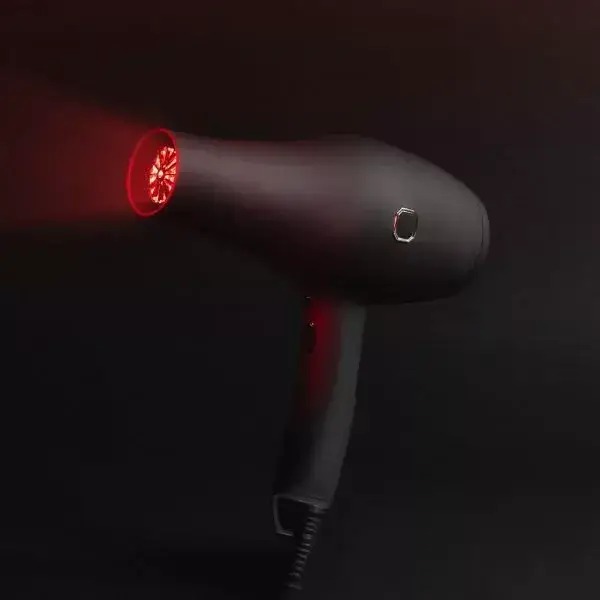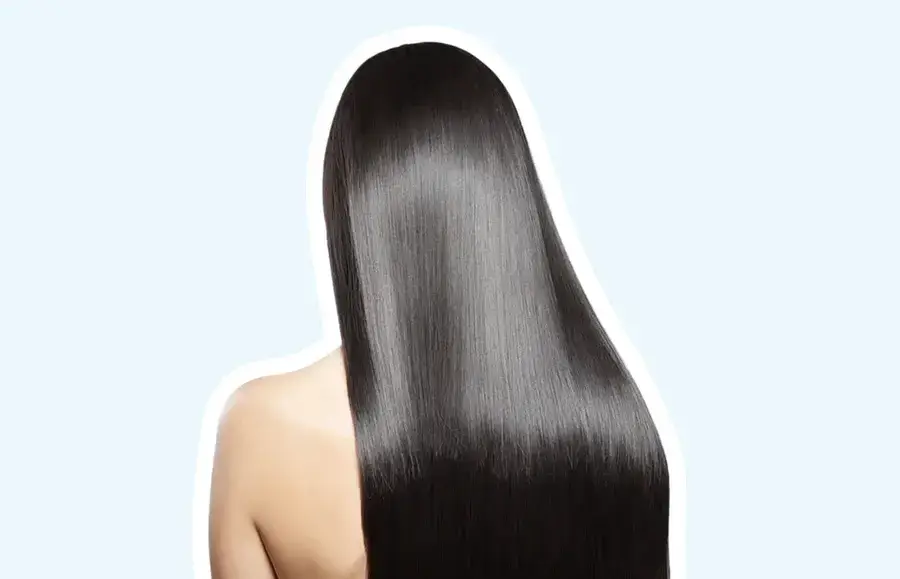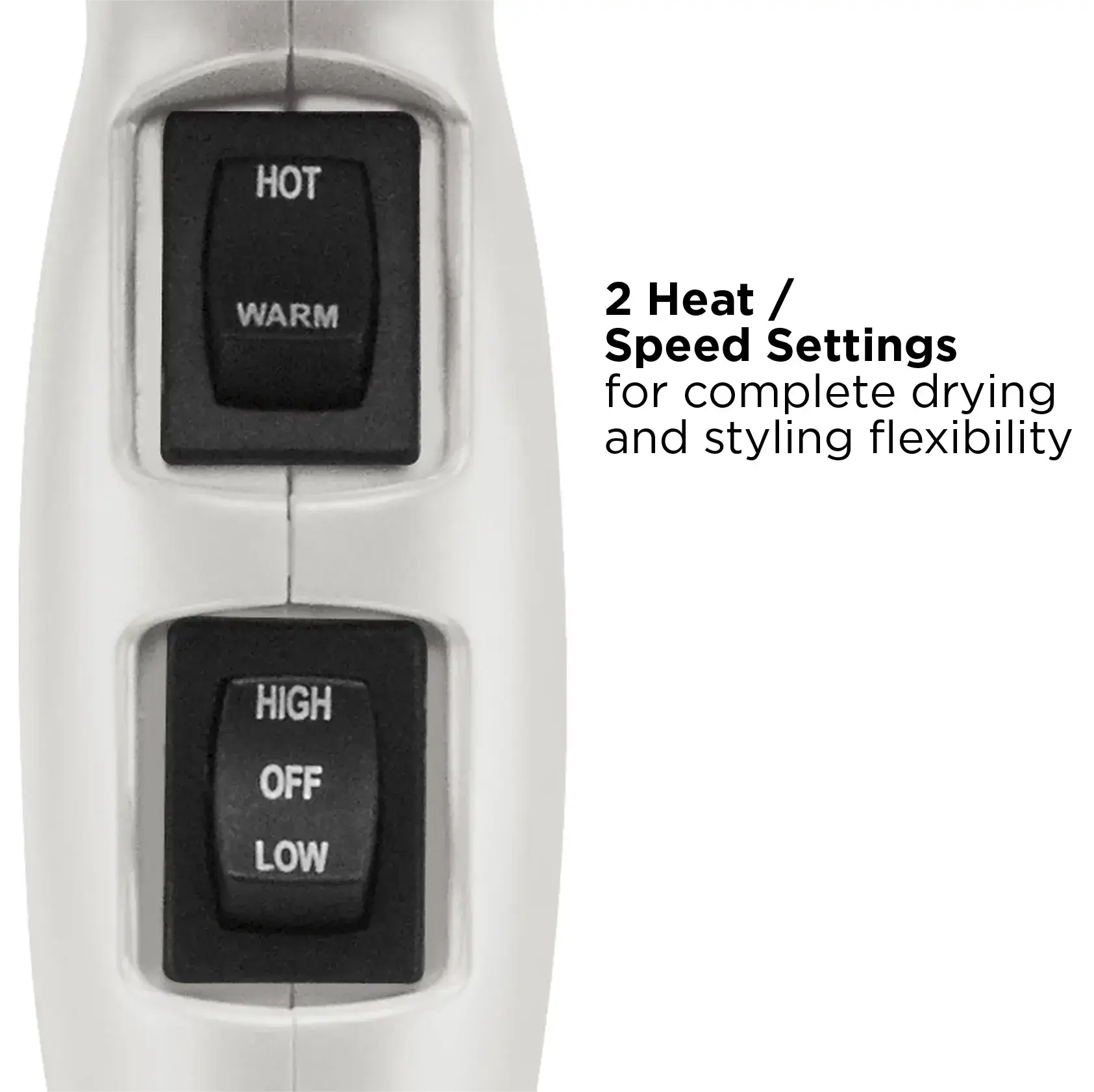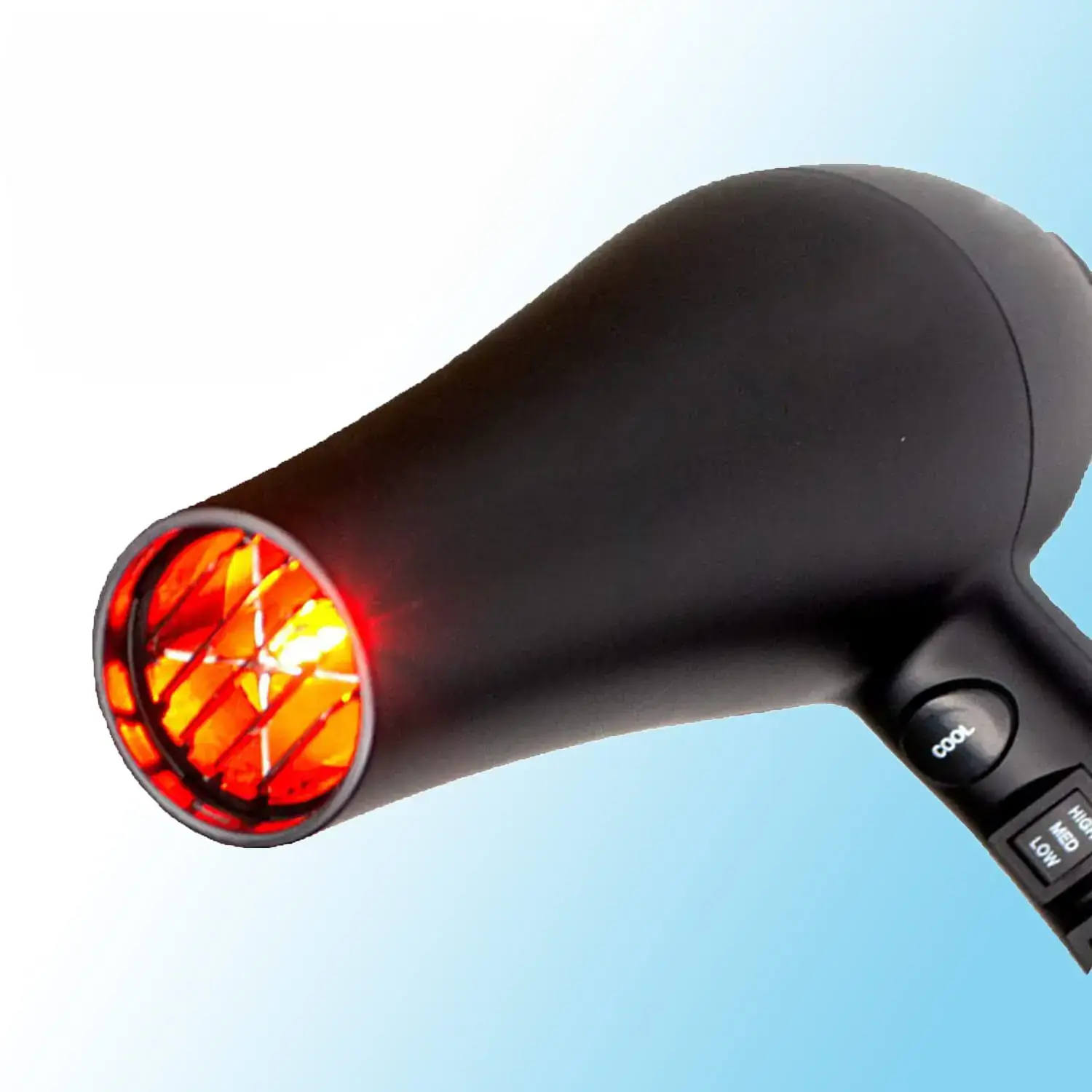
- Home
- Hair Dryer
- Infrared Hair Dryers: Understanding the Benefits and Features
Infrared Hair Dryers: Understanding the Benefits and Features

Infrared technology has revolutionized the way we approach hair care, offering a gentler, more efficient drying process. Unlike traditional hair dryers that rely on direct heat, infrared hair dryers emit longer wavelengths of energy, penetrating the hair shaft from the inside out. This innovative approach minimizes surface damage, making it a game-changer for those seeking healthier hair maintenance routines.
The Evolution of Hair Dryers: From Traditional to Infrared
The journey from conventional hair dryers to the advent of infrared models reflects a broader shift towards prioritizing hair health and efficiency in styling tools. Initially, hair dryers were all about high heat and powerful airflow, often leaving hair dry, brittle, and damaged. The introduction of infrared technology marked a significant leap forward, emphasizing the importance of maintaining hair’s natural moisture and integrity during the drying process.
How Infrared Hair Dryers Work

The Science Behind Infrared Heating
Infrared hair dryers utilize infrared rays to generate heat, a form of electromagnetic radiation that is absorbed by the water molecules in the hair. This absorption process heats the hair evenly and from the inside out, resulting in a quicker drying time while reducing the risk of heat damage. The technology not only accelerates water evaporation but also ensures a more uniform drying experience, minimizing hot spots that can weaken the hair.
Comparing Infrared Heat with Conventional Heat
The key difference between infrared and conventional heat lies in their approach and impact on the hair. Traditional hair dryers blast hot air onto the hair’s surface, often leading to uneven drying and excessive moisture loss. In contrast, infrared heat penetrates deeper, drying the hair more evenly and preserving its natural oils. This distinction makes infrared hair dryers particularly beneficial for those with delicate or damage-prone hair.
Key Benefits of Using Infrared Hair Dryers
Enhanced Drying Time
Infrared hair dryers are renowned for their ability to dry hair faster than traditional models. By heating the hair from the inside out, they reduce drying time substantially, which is not only convenient but also lessens the time hair is exposed to heat, further reducing the risk of damage.
Healthier Hair: Reducing Heat Damage
The gentle nature of infrared heating minimizes the likelihood of heat damage, such as split ends and brittleness. This is especially advantageous for those with dry, colored, or chemically treated hair, as it helps maintain hair’s strength and elasticity.
Improved Blood Circulation to the Scalp
The deep penetration of infrared rays can also boost blood circulation in the scalp, promoting hair growth and scalp health. This improved circulation brings more nutrients and oxygen to the hair follicles, encouraging stronger and healthier hair growth over time.
How Infrared Technology Preserves Hair Moisture

One of the most significant benefits of infrared hair dryers is their ability to preserve the hair’s natural moisture balance. By avoiding the harsh surface drying associated with traditional dryers, infrared models help maintain the hair’s moisture levels, leading to softer, shinier hair that retains its natural luster and vitality. This moisture preservation is crucial for preventing dryness and ensuring hair remains manageable and resilient against styling stress.
Features to Look for in an Infrared Hair Dryer
Wattage and Power
The wattage of a hair dryer affects its drying power and efficiency. Infrared hair dryers typically range from 1,800 to 2,500 watts. Higher wattage models offer faster drying times, which is beneficial for thick or long hair. However, it’s essential to consider energy consumption and the potential for heat damage. A balanced wattage that suits your hair type and drying needs is key.
Adjustable Heat and Speed Settings

Versatility in heat and speed settings allows for customized drying experiences that can adapt to different hair types and styling needs. Lower heat settings are gentler on fine or damaged hair, while higher settings can efficiently handle thick or coarse textures. Speed variations can help control styling, with slower speeds offering more precision for styling and faster speeds providing quick drying for busy mornings.
Ionic Technology Integration
Infrared hair dryers often incorporate ionic technology, which emits negative ions to break down water molecules on the hair. This technology enhances the drying process, reduces frizz, and boosts shine by sealing the hair cuticle. When combined with infrared heat, ionic technology can further minimize heat damage and promote healthier, smoother hair.
Attachments and Accessories
Look for infrared hair dryers that come with useful attachments:
Concentrator nozzles are ideal for focused drying and styling, directing the airflow precisely where needed.
Diffusers distribute heat more evenly and are perfect for enhancing natural curls and adding volume.
Comb attachments can help straighten hair as it dries, reducing the need for additional heat styling.
Best Practices for Using Infrared Hair Dryers
Tips for Effective Drying Without Damaging Hair
Use a Heat Protectant: Always apply a heat protectant spray or serum to your hair before drying. This creates a protective barrier that helps minimize heat damage.
Keep the Dryer Moving: Avoid focusing the dryer on one spot for too long. Keep it moving to distribute heat evenly and prevent overheating sections of your hair.
Section Your Hair: Drying your hair in sections can be more efficient and ensures even heat distribution. It allows you to focus on drying each section thoroughly without over-drying others.

Finish with Cool Air: Many infrared hair dryers come with a cool shot button. Use it to finish your drying process, sealing the hair cuticle and enhancing shine.
How to Maximize the Benefits of Infrared Drying
Pre-Dry Your Hair: Towel-dry your hair or let it air dry until it’s damp but not wet. Starting with excessively wet hair can prolong drying time and increase heat exposure.
Choose the Right Settings: Utilize the adjustable heat and speed settings to match your hair’s thickness and condition. Start with lower heat and increase as needed to prevent unnecessary damage.
Utilize Attachments: Use the appropriate attachments for your hair type and desired style. Concentrator nozzles and diffusers can make a significant difference in the drying process and final look.
Regular Maintenance: Keep your hair dryer clean, especially the filter, to ensure it operates efficiently. A clogged dryer can overheat and may become a hazard or damage your hair.
Top Picks: Infrared Hair Dryer Reviews

Reviewing the Leading Models on the Market
In this segment, we delve into the crème de la crème of infrared hair dryers, highlighting their innovative features, usability, and how they stand out from the crowd. Each model has been rigorously tested for efficiency, comfort, and durability. From professional-grade dryers with advanced settings to budget-friendly options that don’t skimp on quality, we provide an insightful analysis to help you navigate the best picks for your specific needs.
What to Consider Before Making a Purchase
Choosing the right infrared hair dryer involves more than just opting for the most popular brand. In this section, we discuss the key factors to consider, including:
Power and Wattage: Higher wattage for quicker drying times but balanced to avoid hair damage.
Weight and Ergonomics: Comfort in handling during use.
Heat and Speed Settings: Customizable options for different hair types and styles.
Additional Features: Such as cool shot buttons, diffusers, and concentrator nozzles for styling versatility.
Price vs. Quality: Finding the right balance between affordability and long-term reliability.
Comparing Infrared Hair Dryers with Traditional Models
Price Comparison
Here, we break down the cost differences between infrared and traditional hair dryers, explaining why infrared models may come with a higher price tag and whether the investment is worth it considering durability, energy efficiency, and hair health benefits.
Performance and Results
This section evaluates how infrared dryers stack up against conventional models in terms of drying time, heat distribution, and the overall impact on hair health. We explore how the gentle, even heat from infrared dryers reduces the risk of heat damage and enhances hair’s natural shine.
User Feedback and Satisfaction
By compiling reviews and feedback from various users, we present a well-rounded view of the user experience. This includes satisfaction with the drying process, noticeable differences in hair condition, and any drawbacks or limitations encountered.
FAQs: Common Questions About Infrared Hair Dryers
What makes infrared hair dryers different?
Infrared hair dryers use electromagnetic waves to dry hair from the inside out, reducing drying time and heat damage compared to traditional dryers.
Are they safe?
Yes, infrared hair dryers are safe and less damaging than conventional dryers, thanks to their gentler heat.
Can they improve hair health?
Absolutely. By minimizing heat exposure and preserving natural moisture, infrared dryers promote healthier, less frizzy hair.
Do they really dry hair faster?
Yes, the efficient heat mechanism of infrared dryers cuts down drying time significantly.
How do I choose the right one?
Select a dryer with adjustable settings and consider attachments based on your hair type—ionic technology for frizz-prone hair, diffusers for curls, and concentrators for straight styles.
Are they suitable for all hair types?
Yes, with proper heat adjustment and attachments, infrared dryers work well for any hair type.
Any special maintenance required?
Keep the air filter clean to maintain performance. Otherwise, maintenance is similar to traditional dryers.
Conclusion: Is an Infrared Hair Dryer Right for You?
Summarizing the Pros and Cons
Weighing the advantages against the potential downsides, this summary helps readers determine if an infrared hair dryer aligns with their hair care needs and priorities. We highlight the long-term benefits for hair health, efficiency in drying, and the cost-effectiveness of investing in a high-quality model.
Personalized Advice for Different Hair Types
Understanding that hair care is highly personal, we offer tailored advice for selecting an infrared dryer based on hair type—fine, thick, curly, or color-treated. This guidance ensures that every reader can make an informed decision that best suits their unique hair care routine.
This expanded content not only informs but also empowers readers to choose a hair care tool that will enhance their daily routine, improve hair health, and offer the best value for their investment.
Popular Post

Ultimate Guide to Using a Hair Dryer with Nozzle for Styling

The Benefits of Using a Hair Dryer with a Diffuser



